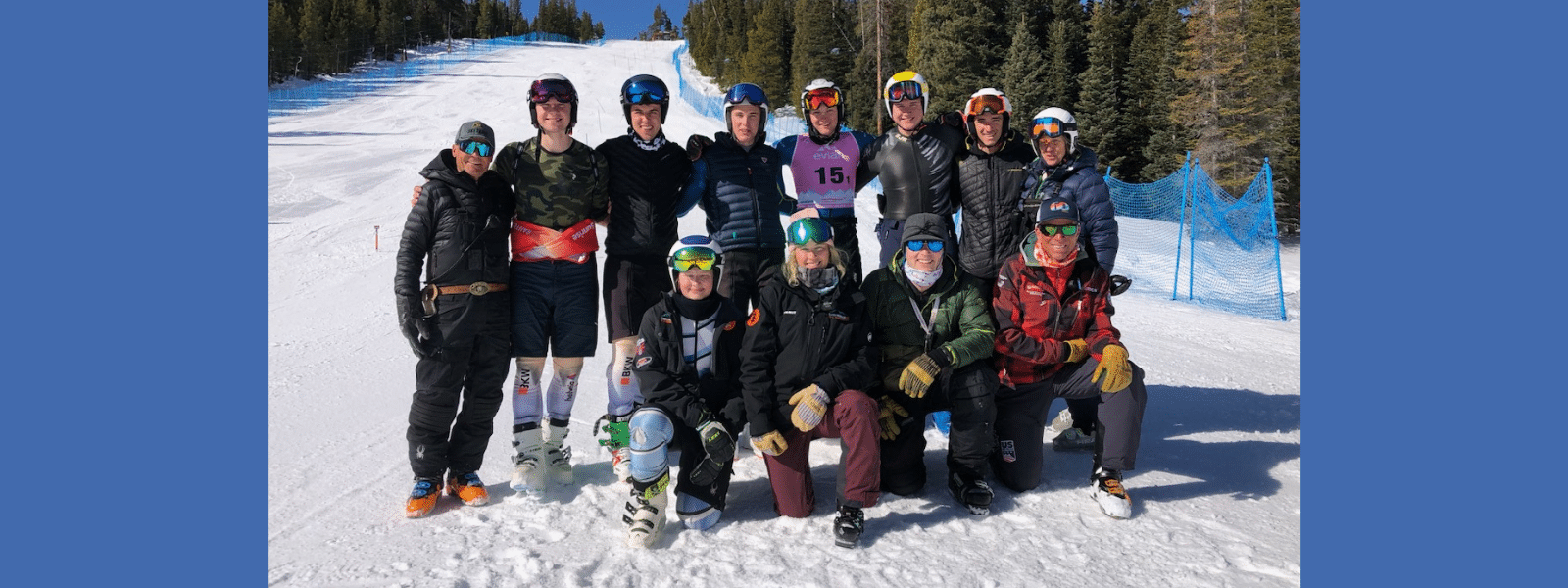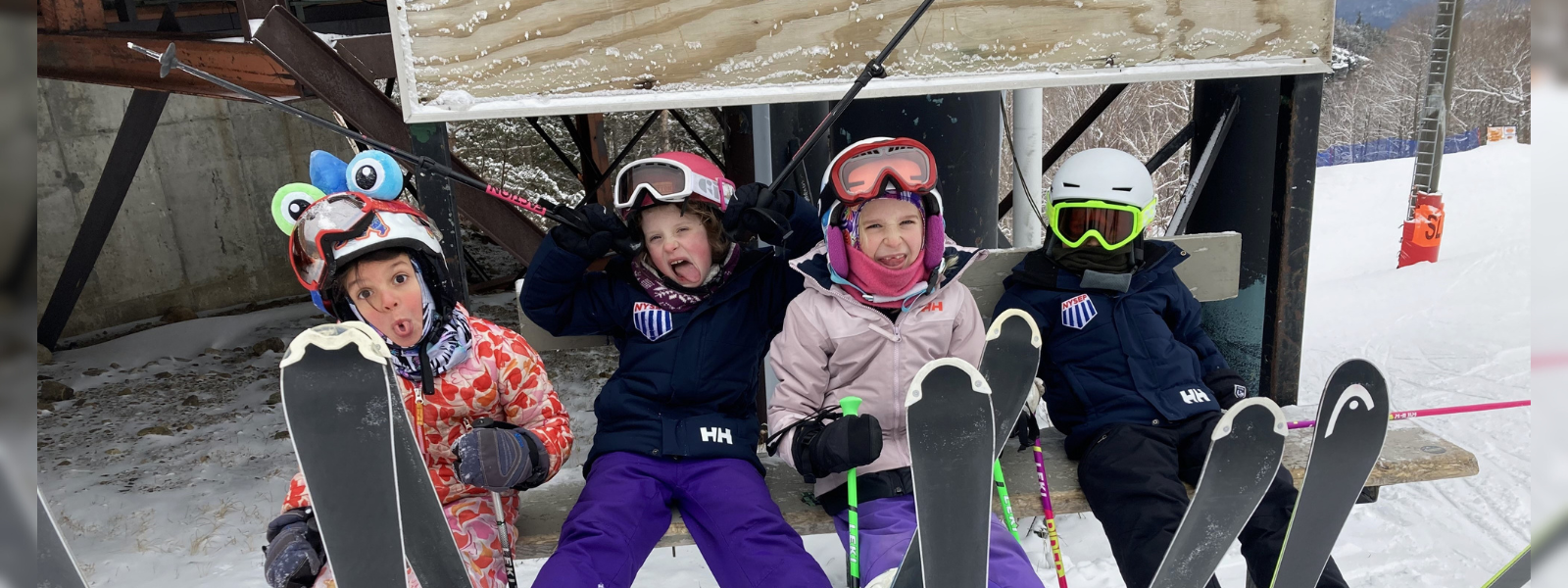4 Ways to Put More Fun into Your Race Runs
For the last five winters, I’ve run the masters program for the Silver Run Ski Educational Foundation at Red Lodge Mountain, Mont. Jack Ballard, my — might I say? — exceptionally athletic husband, joined the program when I did, but as a first-timer in gates.
And he’s improved remarkably.
When we do freeskiing drills or work on our skiing outside a course, Jack’s nimble and near flawless, on par with many members of the U.S. Alpine Masters Ski Team, but in the gates — well, it depends on the day.
“You look the same in and out of a course,” Jack said with a sigh one night. “Why can’t I do it?”
Jack’s situation is echoed by many of the 30-plus racers in the Silver Run program and virtually every other masters race program across the country. Lots of us can carve powerful, precise turns on the groomers, but when there are GS panels in front of us, our skis skid, jam and chatter. Slalom is worse. It’s a vexing problem not only for masters racers but juniors as well.
My quick answer to Jack’s question is mileage. I’ve been skiing since age 2 and racing since age 6. He dabbled at skiing in high school, then took up the sport in earnest at age 45. Jack and other athletes who train almost daily, his freeskiing and gate skiing will draw closer together as his experience increases, though it might take another few years. Then there are the masters racers who’ve been at it for a half-century who still don’t ski gates as proficiently as they freeski.
So here are four tricks to run gates like you freeski.

Running gates isn’t exactly like freeskiing, but there are many similarities, including level shoulders, separation of upper and lower body and pressure on the outside ski. (Jack Ballard photo.)
1. Fix your line.
The main difference between freeskiing and skiing in a course is the fact that the gates dictate where you have to turn. You don’t get to choose. As a result, if your line isn’t in the correct spot, your turns won’t feel clean, powerful or fluid. The No. 1 way to move your freeskiing ability into gates is to concentrate on your course-running tactics. Run your training on courses at 60 percent of your maximum speed to get the right line, then 80 percent. Then, when you’ve got it, accelerate to race pace.
2. Pick your chest up.
In an effort to go faster, many skiers try to get more aerodynamic in gates by hunching forward or breaking at the waist, though they never do that on the open slopes, even when they’re skiing very fast. In GS and slalom, stand on your skis like you do outside a course. Your shoulders should be level and your torso relatively upright.
3. Avoid excess hand and arm movements.
An expert skier on the open slopes keeps his hands quiet and forward about belt level and a little wider than his hips. Do it in a course. Too often I see racers stab their hands forward, which causes their butt to move back, or they drop their inside hand, which causes them to lean in as they pass by a gate. Maybe it’s a subconscious attempt to get their hands out of the way. In both cases, the skis flatten or skid rather than carve powerfully through the turn. In GS, give yourself enough space to make a good turn around each gate. Your feet should be about 18 inches off the panel.
4. Look at least two gates ahead.
When you’re freeskiing, it’s easier to look down the hill because it’s open space. It also has less impact on your performance if you don’t. In a course, it’s critical to look ahead to judge where to place the arc of each turn. If you only look gate to gate, you’re merely reacting to each gate, and you only have the distance between each gate to do it.
For example, if a GS course is set with 25 meters between gates and you only look one gate ahead, you have 25 meters to plan and execute each turn — or only a second or two. If you look two gates ahead, then you have twice the distance to do it — and two to four seconds. You have more time even though you’re probably going faster. If you look ahead, your turns will be more fluid and connected, just like when you ski out of gates.
Keep in mind that skiing gates requires more precise technique and tactics. When we freeski, even if we’re trying to be aggressive, it’s tough to evoke the “go for it” attitude that a course arouses, and aerodynamics aren’t as important on the open slopes. That said, I often envision a course in front of me when I freeski on the groomers. Maybe that’s why my technique in and out of gates is the same.
- Freeski at the same pace as you race. You’ll sense the snow and how your skis work more precisely.
- Make the same radius turn when you freeski as in a course. When we freeski, we tend to make wider radius turns than a true GS turn and choppier turns than a true slalom. Make your GS-style turns tighter and your slalom turns rounder. The closer you can simulate the turns in a course, the more those turns will translate into gates.
- Change it up rhythm-wise while freeskiing; replicate delay gates; and practice transitions over knolls, fall-away turns, and other variations in rhythm and terrain. Simulate, simulate, simulate! Too often we freeski, well, too freely. Make every turn a good one, no matter where you are on the mountain, and imagine how a gate would look at any moment on the hill.
- Freeski all over the mountain, on the steeps, in bumps, in glades, wherever. The more versatile a skier you are, the better you’ll be in gates, too.
In a course:
- Start with easier, rhythmical courses, about 25 meters between gates with moderate swing. If a course is too tight or has too much swing, your technique and tactics will suffer.
- Progress gradually to more challenging courses on a variety of terrain and snow conditions. Keep in mind, just like freeskiing, not every turn in a course is going to be perfect. If you make a bad one, don’t dwell on it. Make the next one better.
In general:
- Get more mileage! Ultimately, there’s no shortcut for experience. The more you ski in gates and out of them, the better you’ll be at both.
Freeskiing GS-style turns down a slope can lead to faster times on a GS course down the same slope.






















